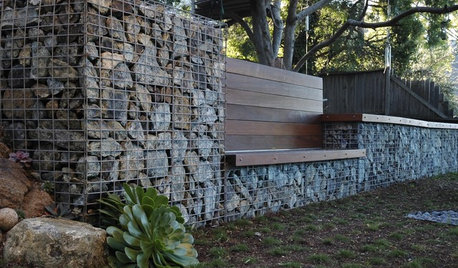Grounds with no wire nuts!!
ninja727
15 years ago
Related Stories

DECORATING GUIDESInspiring Materials: Metal Wire
Add the Open Look of Wire to Your Lighting, Furnishings and Decor
Full Story
FURNITUREModern Icons: The Eames Wire Base Table
Simple modern table is light and versatile enough for every room in the house
Full Story
GREEN BUILDINGThe Big Freeze: Inventors Break New Ground to Keep Things Cool
Old-fashioned fridges can be energy guzzlers, but there are more eco-friendly ways of keeping food fresh, as these global innovations show
Full Story
DECORATING GUIDESNo Neutral Ground? Why the Color Camps Are So Opinionated
Can't we all just get along when it comes to color versus neutrals?
Full Story
ARCHITECTUREStilt Houses: 10 Reasons to Get Your House Off the Ground
Here are 10 homes that raise the stakes, plus advice on when you might want to do the same
Full Story
TREESGreat Design Plant: Pinyon Pine
You might just go nuts for this tough evergreen native to the Western U.S.
Full Story
GREAT HOME PROJECTSHow to Create a Built-In Home Bar
New project for a new year: Get the nuts-and-bolts info on building a swank home bar into a nook or wall
Full Story
DESIGN DICTIONARYGabion Wall
A wire cage filled with rock makes for a free-form wall solution
Full Story
FURNITUREModern Icons: Eames Shell Chair
Eames' Comfy Shell Chair Adds Welcome Curves, Wire or Wood to a Room
Full Story





joed
hendricus
Related Discussions
deep well 230v with 12/3?
Q
light switch ground
Q
Induction cooktop wiring
Q
Light Fix'r Swap: Electrical Box: No Place For Grounding Wire?
Q
Ron Natalie
Ron Natalie
ninja727Original Author
fotostat
maryland_irisman
brickeyee
Ron Natalie
maryland_irisman
brickeyee
Billl
maryland_irisman
Ron Natalie
jmvd20
brickeyee
maryland_irisman
itsunclebill
jmvd20
brickeyee
maryland_irisman
Ron Natalie
HU-239630806
Ron Natalie